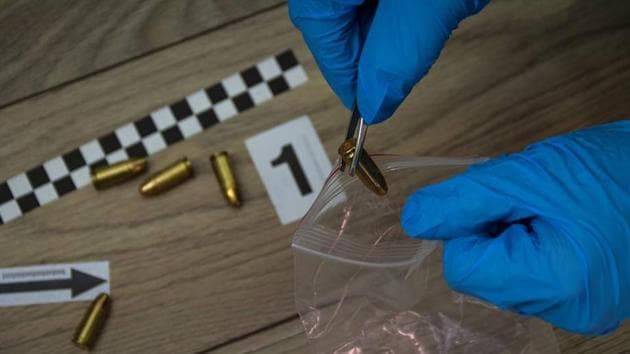Keep media out of crime scene during investigations, say MHA guidelines
Eliminating any possibility of misplacing evidence, a ‘chain of custody’ has to be followed by which every document related to the crime scene evidence has to be maintained in a chronological order.
Often, crucial evidence is lost if a crime scene is not handled properly, slowing down investigations considerably. To prevent such scenarios, detailed guidelines issued by the home ministry (MHA) require police investigators to “maintain the privacy and confidentiality of the scene of crime.” And, most importantly, “not allow the media and press personnel.”

In its ‘how-to checklist’ for collection, storage and transportation of Crime Scene DNA samples issued to top police officials all around the country, MHA has also issued instructions on photography and sketching as these can be key in collecting evidence against criminals.
It should be mentioned here that Chandigarh’s Central Forensic Science Laboratory has been instrumental in drafting these guidelines wherein investigating officers have been asked to take precautionary steps to avoid contaminating evidence in criminal cases.
Police sleuths have also been asked to ensure that notes and reports on cases include “just facts” and leave out opinions, analysis or conclusions.
On sketches and pictures
For reconstructing a scene, especially in case of a heinous crime, sketches must be to scale while providing the exact position of one or two permanent fixtures, which will be helpful in ascertaining its distance to major articles, exhibits, marks such as blood stains, track marks of vehicles etc. The title, case reference, date, time, name and signature of the investigation officer should be mentioned in the corner of the sketch.
For pictures, photographs of evidence should be taken from straight above, eliminating potential distance distortions. Blood pattern should be photographed along with the scale from different angles for identifying the type of weapon of offence.
Eliminating any possibility of misplacing evidence, a ‘chain of custody’ has to be followed by which every document related to the crime scene evidence has to be maintained in a chronological order, including name or initials of the individual collecting the evidence, each person or entity subsequently having its custody, dates on which the items were collected or transferred, agency and case number, victim’s or suspect’s name and the brief description of the item.
A crime scene investigation kit: What should it include?
According to the MHA guidelines, the kit should have UV lighter for spotting and identifying body fluids, high resolution digital camera, disposable gown, cap, shoe, gloves, mask, goggles, hand-towels, biohazard polythene bag for biological waste, sterile gauze, filter paper and desiccant (for moisture control), alcohol swabs and tissue, hand sanitiser, hand torch and magnifier lens, evidence collecting envelopes and cardboard cartons etc.



